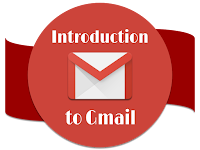Every year my 2nd graders learn quite a lot of digital skills over the course of the year. This year, in distance learning, I needed my students to pick up a lot more digital skills a lot faster than they would need to in a normal school year. So I set up a gamified system to explicitly teach students the skills that they would need to be able to navigate their Chromebooks and online classroom more independently, and hopefully to motivate them to complete those lessons.
I started by brainstorming a list of all of the skills and tools that I thought they might need, and then I broke those skills down into sets of even smaller skills. I wanted the lessons to be no more than 2-5 minutes each, with clear outcomes, so that students could celebrate little successes along the way and maintain motivation to keep going.
For example, learning how to use Google Classroom has turned into a whole series of mini-lessons including:
- How to use "classwork" view"
- How to open an attachment on an assignment
- How to use the "mark as done" button
- How to unsubmit
...and the list goes on.
I pushed out the lessons in order of need (and added lessons to the list as new or unforeseen needs arose). The first lessons were about logging into our Chromebooks, how to take a screenshot (they'd need that a lot to submit their evidence of mastery), how to bookmark a website and how to use Clever (our single sign on app).
I create each lesson in a Google Form. It's been the most straightforward way for me to package the lessons and the simplest way for me organize submissions as they come in. Most forms include either a video mini-lesson or a step-by-step graphic, followed by a specific task the students need to complete to demonstrate mastery of the skill and earn their badge. At the bottom of each form is a space for students to upload their evidence (using this tool on a Google Form was also one of the early mini-lessons), usually a screenshot, but as time has gone on, sometimes students create audio files or video files to show their learning.
As students demonstrate mastery of each skill, they earn a digital badge celebrating their accomplishment. I create simple badges in Google Drawings and download them as .png files to paste into a spreadsheet where the students can view their badges. I'm sure there are ways that this can be automated, but since I manually have to check the evidence that they submit anyway, this works just fine for me, and isn't any more work than assessing any other assignment.
While I would like all of my students to participate in the skills badging, they do not. But, those who do participate are having fun "leveling up" when they get a chance, and others can use the spreadsheet to see which students are "experts" in which skills, and then tap those students for peer support when needed. And with all the lessons archived in our Google Classroom, any student that wants it has the opportunity to go in and complete older lessons to earn those badges.
Overall, the majority of students enjoy the lessons and have fun trying to collect as many badges as they can. I've noticed that my students did learn how to use their Chromebooks more proficiently and quickly this year than years past, and I plan to continue this practice even as we return to the classroom.
-----------------------------------------------
**This system was inspired by a badging system I used last year to differentiate and individualize computer science instruction for my elementary students. Those resources will come in a future post.





Comments
Post a Comment